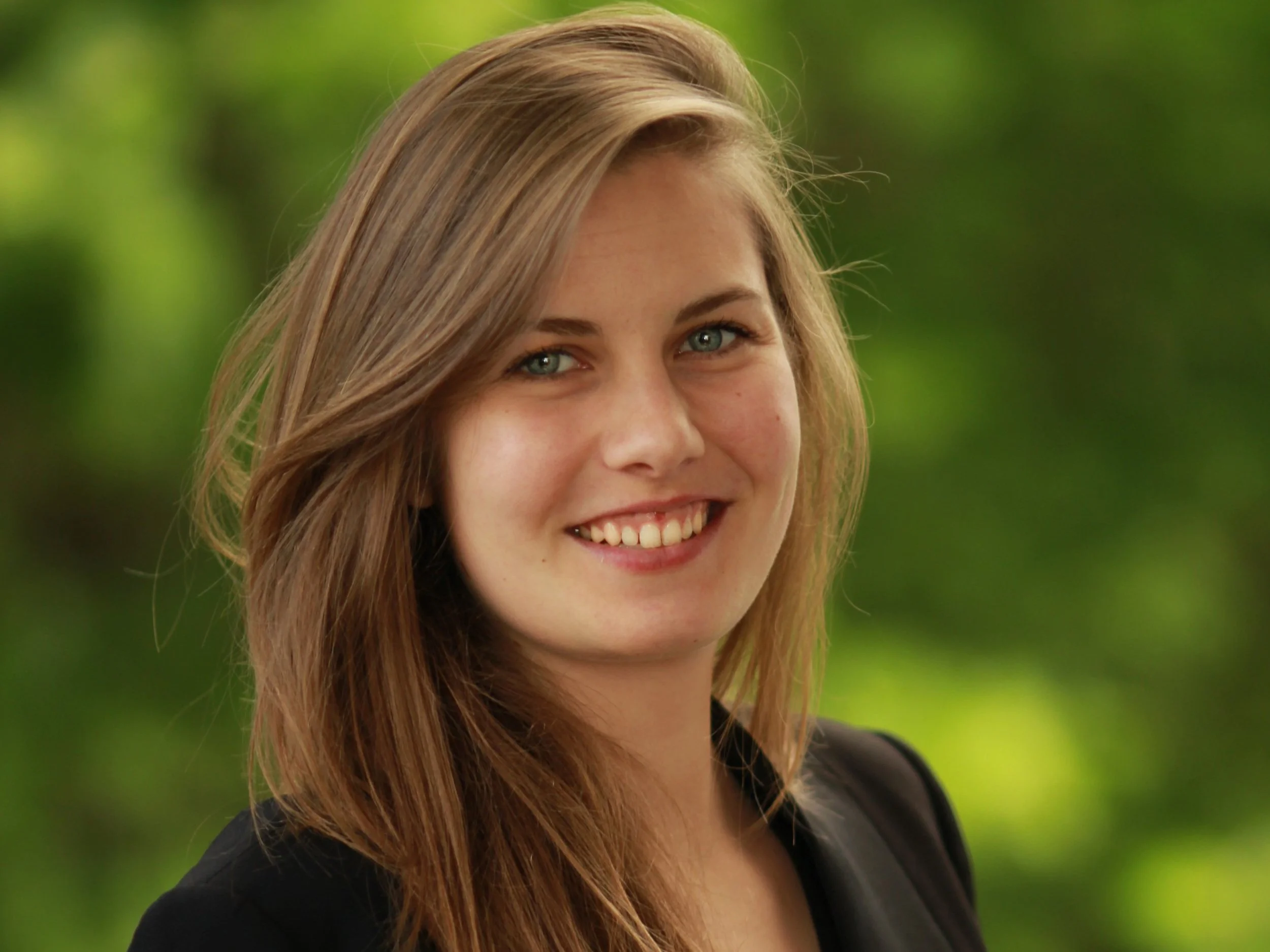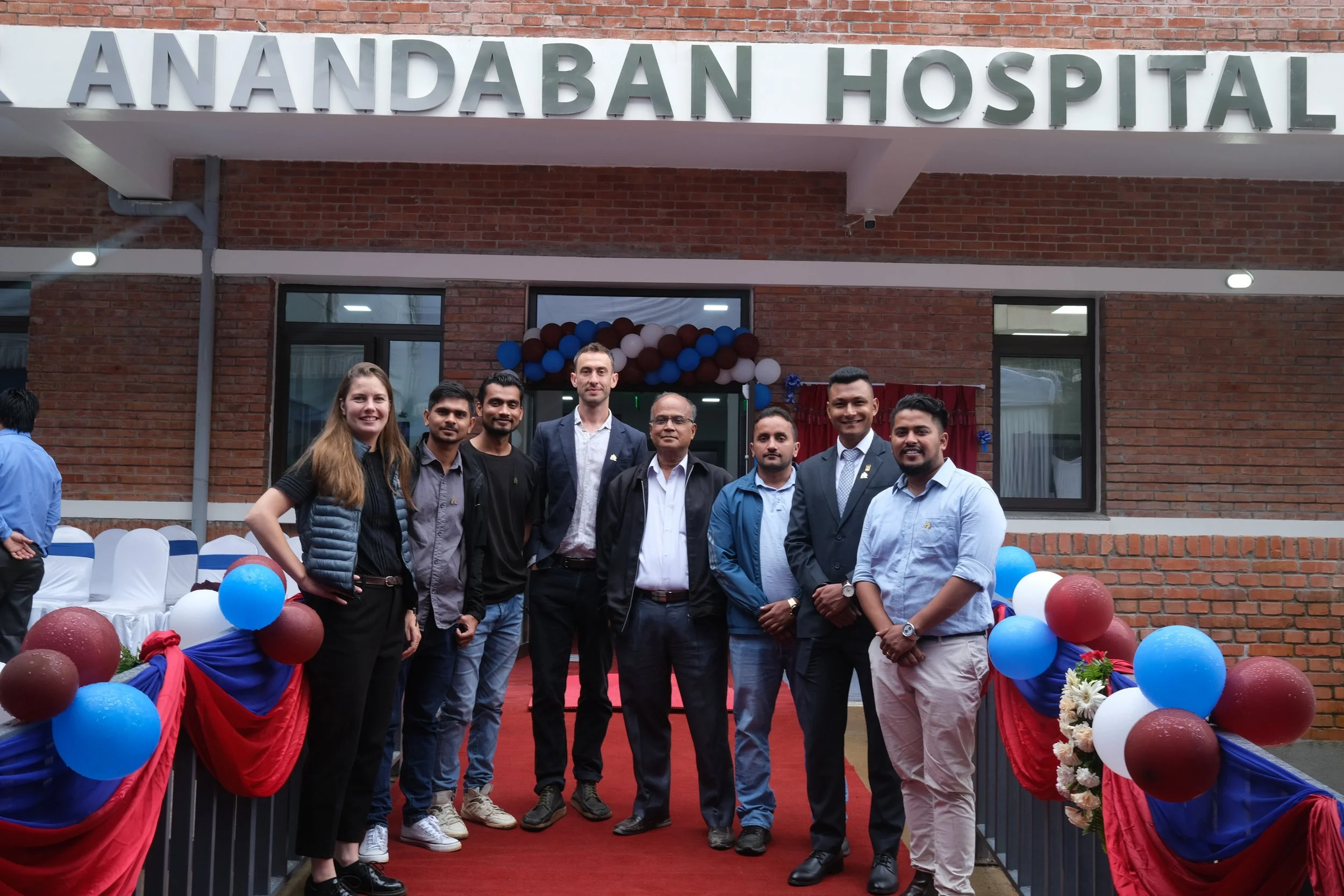Voices from the field: Interview with Marie Herber
This article delves into Site Architect Marie Herber’s inspiring journey from working on residential projects in London to building life-changing healthcare facilities in Nepal through her role with Article 25.
From adapting to cultural differences on-site to championing sustainable, low-tech designs, her story showcases how architecture can go beyond buildings to transform communities and improve lives in vulnerable regions.
1. What inspired you to become an architect?
My first glimpse at designing a space was actually with my parents! They designed their dream house when I was seven years old, and I found myself cutting out paper to the size of rooms and piecing them together to create what looked like a plan.
My passion was born then, but what truly drove me to pursue architecture as a profession was the desire to imagine, build, provide a space for people where they feel safe and healthy— buildings that go beyond bricks and the foundation and that sustain a community.
2. Who influenced your approach to architecture?
Francis Kéré, an architect from Burkina Faso and winner of multiple esteemed architectural awards, has had a profound influence. After studying in Germany, he returned to his village to build a school, blending traditional local materials with modern design techniques.
His low-tech, sustainable designs naturally cool spaces without the need for air conditioning, while also empowering communities by using familiar materials. For example, the mud floors in his projects are crafted in rhythm with traditional songs and dances, turning construction into a communal, cultural event.
His work beautifully illustrates how architecture can preserve a culture's identity and knowledge while creating spaces that enrich and uplift lives.
3. How did you first hear about Article 25, and what drew you to join the team?
Originally from France, I moved to London and worked with various commercial firms, mainly on residential buildings. However, I always had this lingering desire to do something more meaningful, to work on projects that genuinely helped people. But I wasn’t sure if I had the right skills for social impact work, so it remained a “one day” goal in the back of my mind.
That changed when I attended a “Make Design Matter” talk event where an architect shared his experiences with Article 25. I was deeply inspired by their approach—not just designing buildings, but building communities, with people at the heart of the process.
It was clear that Article 25's projects weren’t just about walls and foundations; they were about shaping lives. Their focus on off-grid projects and making real, tangible differences in vulnerable areas sparked something in me. When I learned they were looking for site architects for a project in Nepal, I knew I had to apply.
4. Tell us about the projects you worked on.
I had the incredible opportunity to work on a trauma centre in Nepal, within a hospital compound that serves outpatients and leprosy patients.
It was amazing to see how we could improve healthcare infrastructure and collaborate with local communities. The entire process felt like a true team effort, with ideas exchanged between our European perspectives and the Nepalese way of working.
One key aspect of working there was adapting to their culture and learning from their unique way of managing projects. For example, time management was approached differently. They tend to focus on the present, while we in the West are more accustomed to planning ahead. It was a learning curve, but ultimately, it was about balancing our approaches and creating a cohesive workflow to move the project forward.

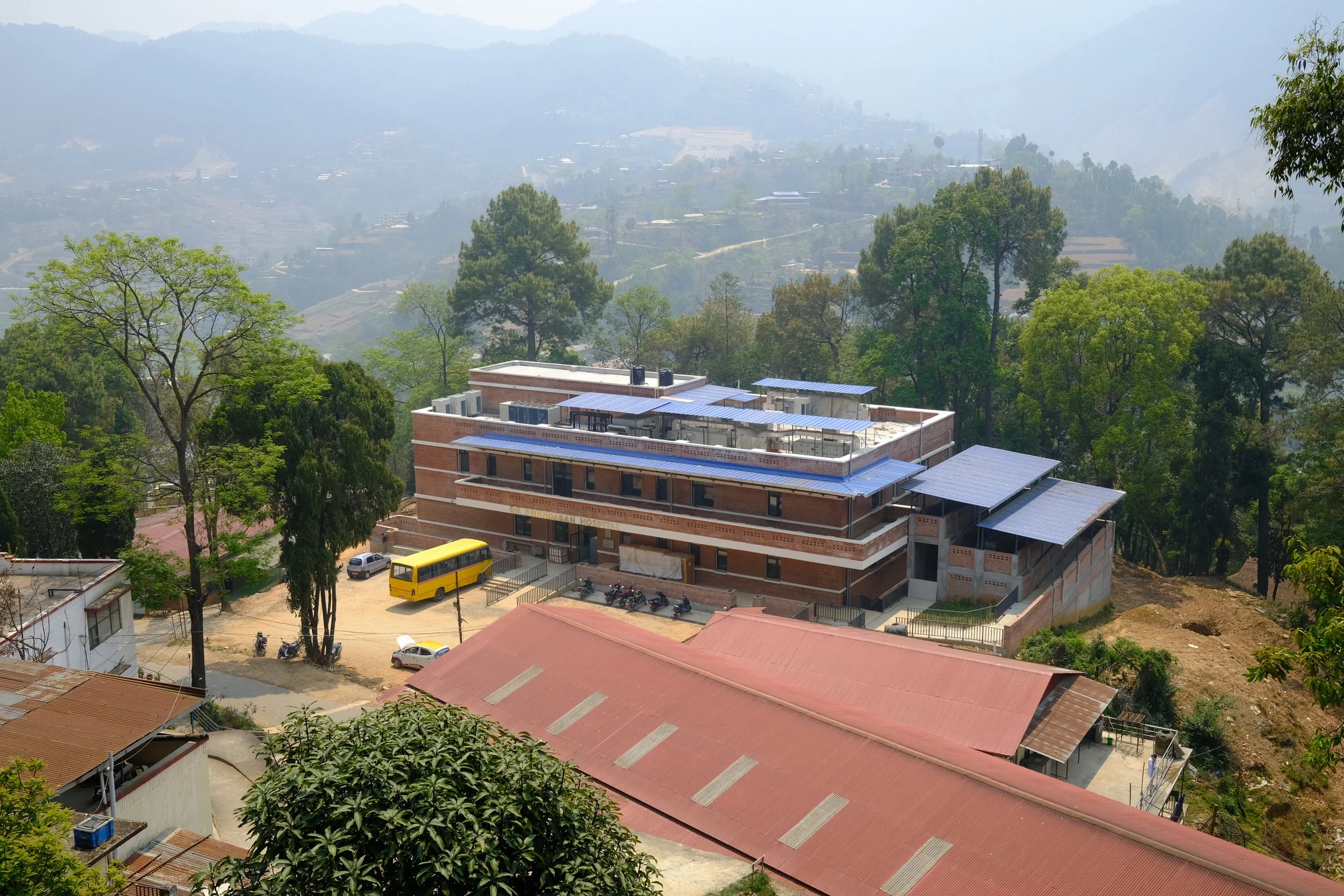

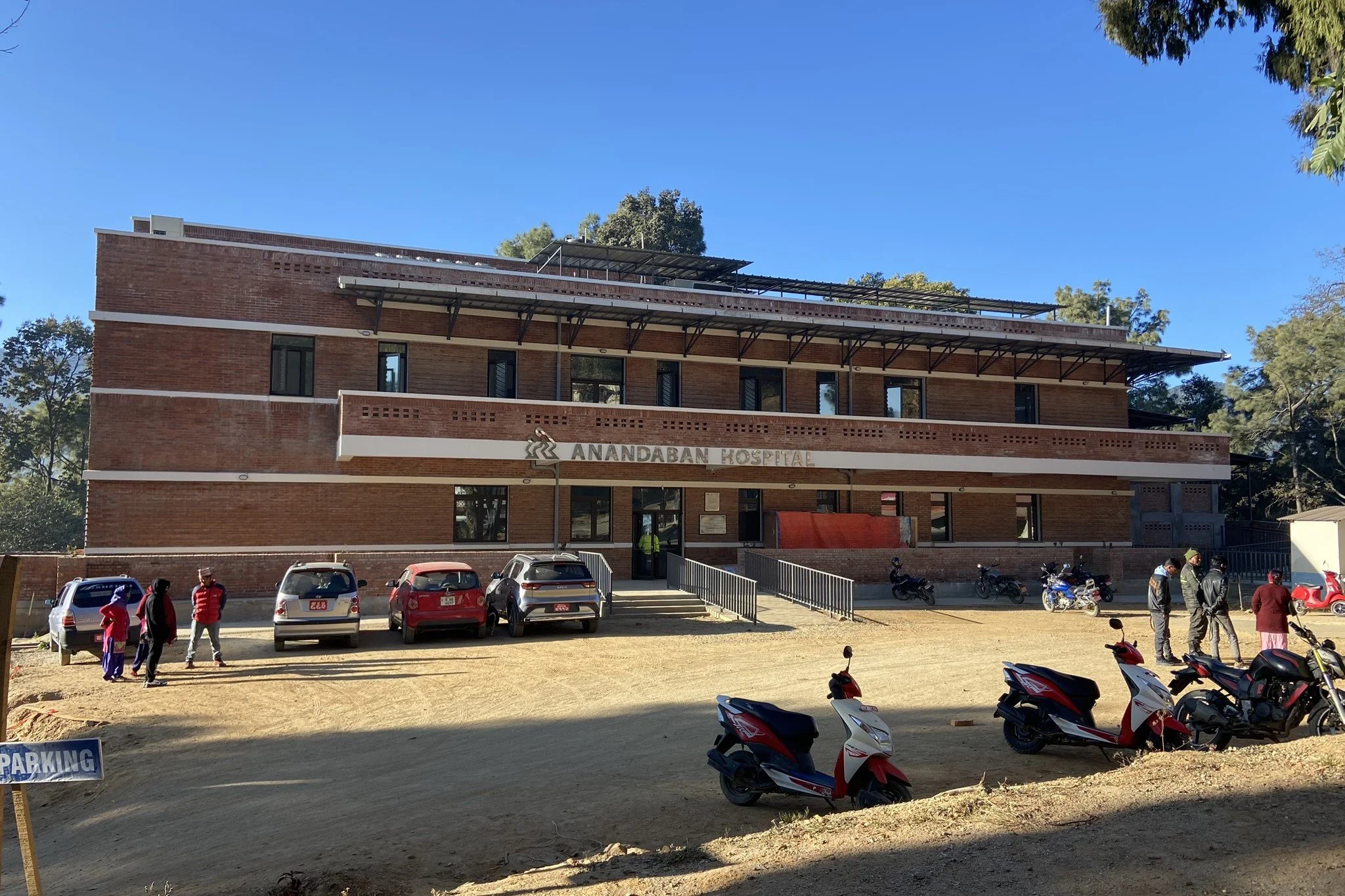

The Anandaban Hospital Trauma Centre in Nepal and Marie on site during construction.
5. What was your daily routine like on site?
I worked and lived in Nepal for three and a half years. Each day, I’d go to the site with the Nepali project manager, overseeing the construction. We would make sure we talked through the issues that came up, control the quality of the work being executed, address the challenges that workers would face to achieve specific details, etc.
Half the day was spent on-site, and the other half dedicated to administrative tasks, including coordination with the hospital’s admin team, communication with the client team in London, and weekly reporting on the project's progress. We also held regular team meetings, visited vendors in Kathmandu, and coordinated with local design engineers. And, of course, learning the Nepali language was essential for building relationships and navigating day-to-day life.


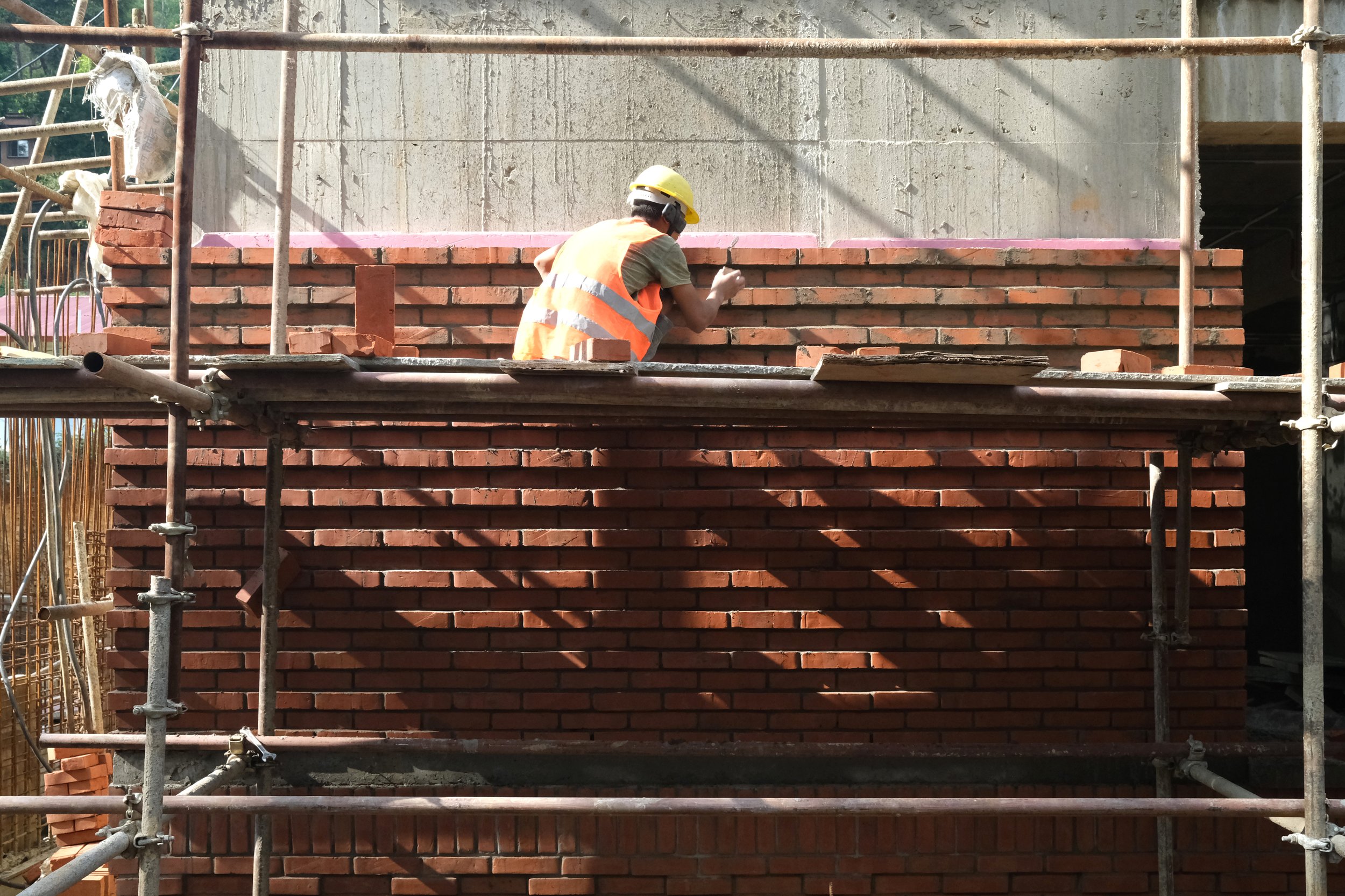

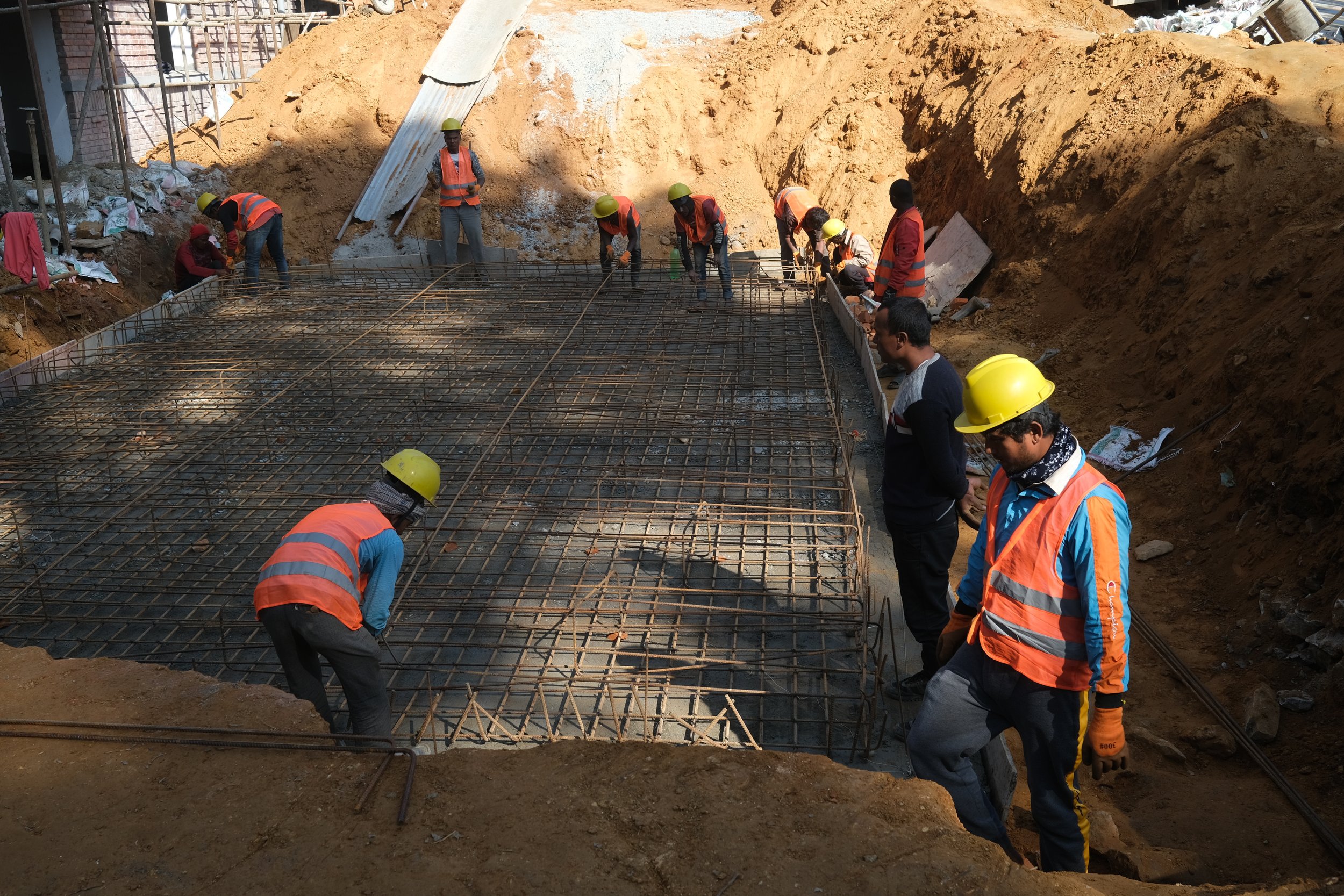
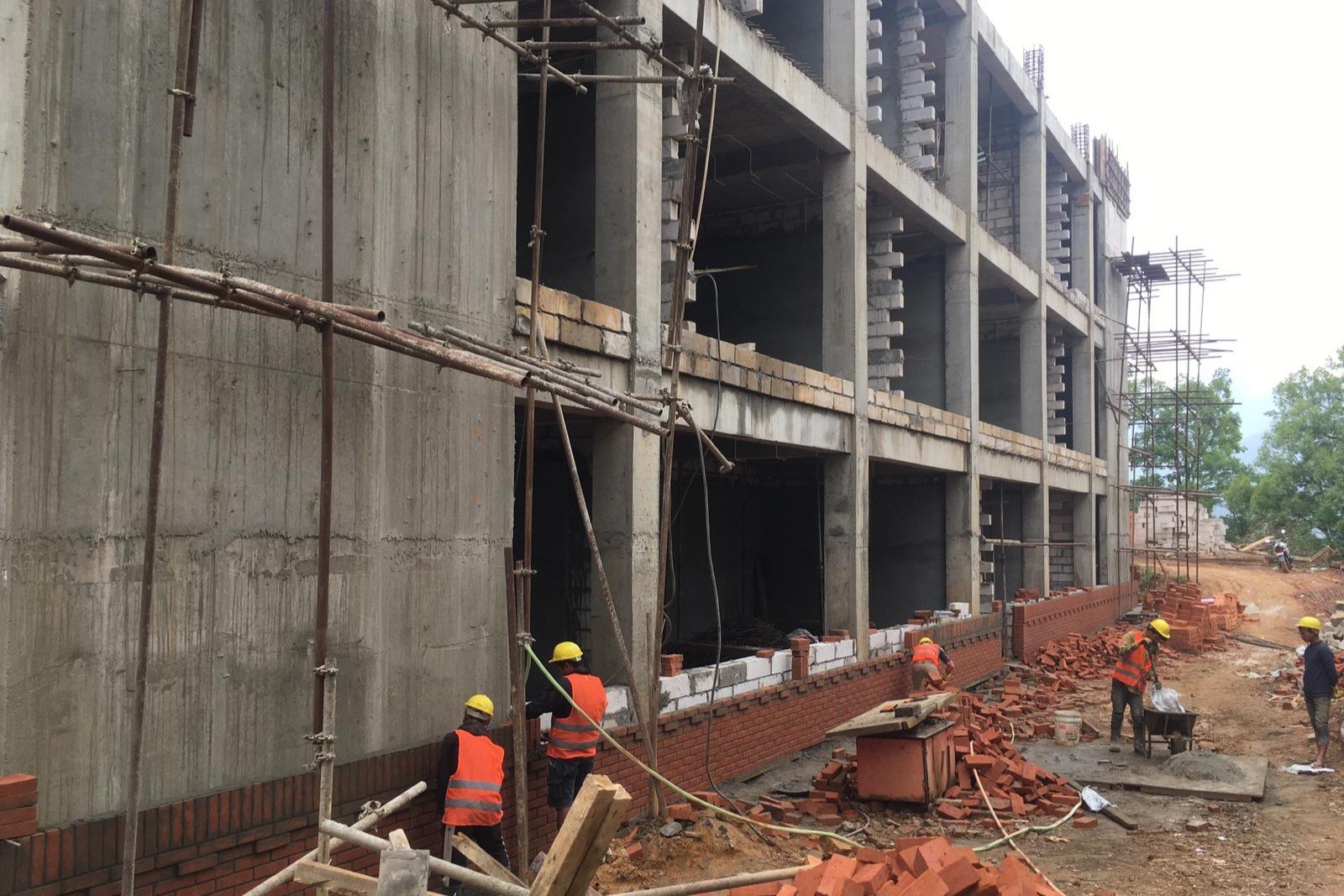

Local workers and contractors during different stages of construction.
6. What was the biggest challenge you faced as a Site Architect?
One of the most significant challenges was bridging the cultural and operational gaps between the many different teams involved.
The site in Nepal had its own set of expectations, while the clients in the UK and US had theirs, often with high standards and tight schedules. It was a delicate balance between managing the realities on-site and meeting those expectations.
The pandemic only made things more complicated, as we had to navigate new challenges in coordination and logistics. It was also essential to maintain a clear vision of both the big picture and the finer details as the project progressed.
7. What was the most rewarding part?
There were so many! Being part of a different culture, working together with local communities to build something that will serve them for the next 50 years—it was incredibly fulfilling.
The people were so welcoming, even though they had very little, they gave their time, their kindness, and their hospitality around a cup of chai.
One standout memory is once when I was hiking around the hospital area and met a pregnant Nepali woman who mentioned her plans to travel for more than an hour over bumpy roads to reach the nearest hospital. Our project was creating easier access to healthcare for people like her, and it felt good to know we were making a tangible difference in their lives. I still keep in touch with the team in Nepal; we often text and chat about things like the weather!
8. What are some key insights you gained working with Article 25, and what are your hopes for the future of sustainable architecture?
Patience, diplomacy, and multitasking—especially when it comes to managing sites and financial aspects, coordinating projects, and bridging different cultures.
Above all, I’ve learned that compassion, trust, and active listening without judgement are crucial for creating strong, successful working relationships. And sometimes, you need to know which battles to fight to keep the project moving smoothly.
I hope low-tech architecture becomes the go-to solution whenever possible. Durability should be prioritised over speed. We should focus on reusing buildings that are still in good condition, and when we need to build new ones, we should use durable, low-tech, local materials and artisanry techniques that have been passed down through generations. These methods are often better suited to the local climate and can be sustained long into the future.
Official opening of the Anandaban Hospital Trauma Centre in Nepal.
9. What are you working on now? And what advice would you give to someone considering moving into the social impact sector?
I’m currently working in heritage building conservation, focusing on retrofitting, and rehabilitating historic structures. It’s a different kind of meaningful work, but my experience with Article 25 was truly life changing. The vibrancy and impact of the projects I worked on still resonate with me. Now, I’m continuing my journey by helping to preserve buildings that have stood for centuries, refreshing them for the next 50 or 100 years.
As for my advice: If you’re feeling that pull, follow your heart. Overthinking it or waiting for the perfect moment can hold you back from doing what you truly want to do. That was the case for me. I’m so grateful I made the leap—it brought me incredible experiences and opportunities that I wouldn’t trade for anything.
10. And now for two fun questions! If Article 25 were an animal, what would it be and why?
An elephant—strong, loyal to its family and community, empathetic, and enduring.
11. If you could travel back in time to witness the construction of any historical building, which one would it be?
I’d choose the palace at Patan Durbar Square. It was built with incredible seismic innovations for enhanced structural resilience (including interlocking bricks, large timber lintels, timber beam in the walls...), and water management systems for natural purified water, using just pen, paper, and skilled masons—no modern technology for structural calculations were used and yet it still stands after several major earthquakes. I’d love to see how they accomplished such impressive feats with limited tools.

